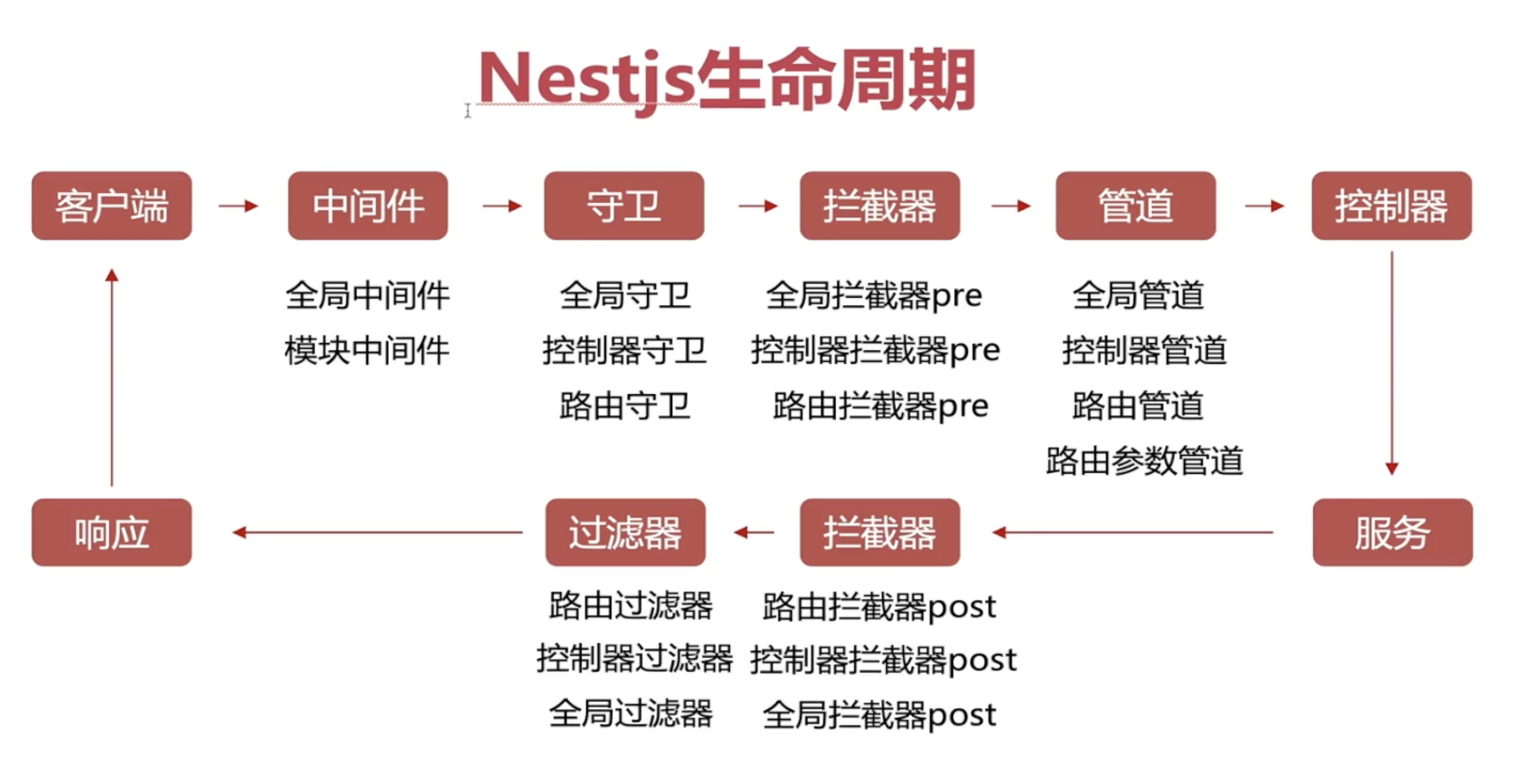守卫 Guard
守卫是一个使用 @Injectable() 装饰器的类。 守卫应该实现 CanActivate 接口。
守卫有一个单独的责任。它们根据运行时出现的某些条件(例如权限,角色,访问控制列表等)来确定给定的请求是否由路由处理程序处理。这通常称为授权。在传统的 Express 应用程序中,通常由中间件处理授权(以及认证)。中间件是身份验证的良好选择,因为诸如 token 验证或添加属性到 request 对象上与特定路由(及其元数据)没有强关联。
简单的来说,守卫就是再访问各个路由前去校验授权的一系列操作。
优先级
守卫在每个中间件之后执行,但在任何拦截器或管道之前执行。

创建与基本结构
NestCli工具提供了非常简便的创建方法。
bash
nest g gu guard/xxxnest g gu guard/xxx基础结构:
ts
// guard.ts
import { CanActivate, ExecutionContext, Injectable } from "@nestjs/common";
import { Observable } from "rxjs";
@Injectable()
export class MosGuard implements CanActivate {
canActivate(
context: ExecutionContext
): boolean | Promise<boolean> | Observable<boolean> {
return true;
}
}// guard.ts
import { CanActivate, ExecutionContext, Injectable } from "@nestjs/common";
import { Observable } from "rxjs";
@Injectable()
export class MosGuard implements CanActivate {
canActivate(
context: ExecutionContext
): boolean | Promise<boolean> | Observable<boolean> {
return true;
}
}最终返回一个布尔值,如果为true则被使用的类会继续执行下去,如果为false则中断当前逻辑。用法与拦截器等类似,可以分为全局守卫、控制守卫、方法守卫,
使用
控制守卫 & 方法守卫统一使用@UseGuards装饰器进行使用;
ts
@UseGuards(MosGuard)
class xxx {
// 业务逻辑
}@UseGuards(MosGuard)
class xxx {
// 业务逻辑
}全局则需要在main.ts构建的时候使用app.useGlobalGuards进行全局守卫。
ts
// main.ts
import {xxx} from guard.ts
app.useGlobalGuards(xxxx)// main.ts
import {xxx} from guard.ts
app.useGlobalGuards(xxxx)当然守卫可以支持多个,多个的时候有多种写法;
ts
@UseGuards(Guard1)
@UseGuards(Guard2)
class x {}@UseGuards(Guard1)
@UseGuards(Guard2)
class x {}想要支持多个只需要额外的新增一个@UseGuards装饰器即可,但特别强调的是如果采用上述写法,守卫的执行顺序将从下往上,即守卫Guard2先运行,后再Guard1,这和一般阅读的代码习惯稍微有点出入。所以对于习惯前端的使用者来说,采用逗号隔开或者能更得心应手;
ts
@UseGuards(Guard1, Guard2)
class x {}@UseGuards(Guard1, Guard2)
class x {}采取上述写法就可以从左往右依次执行。
 zerone
zerone